Hyundai Venue New vs Old: Exterior, Interior, Features
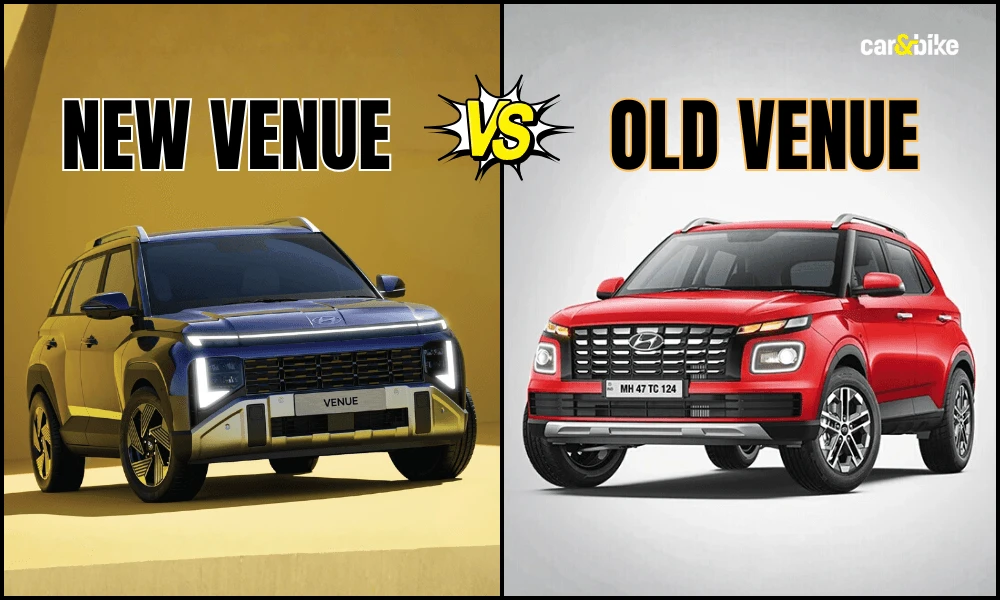
- New Venue gets a major design overhaul
- Interior has been completely revamped
- Gets a host of new features; remains the same under the hood
Hyundai India has taken the covers off the second-generation Venue, with prices set to be announced on November 4. The subcompact SUV has been given a major redesign, and almost every aspect, from the way it looks to the way the cabin is laid out, has been changed. However, Hyundai has carried forward the same set of engine options from the previous model. Here’s a look at how the new Venue has evolved compared to its predecessor.
Also Read: 2026 Hyundai Venue: In Pictures
Hyundai Venue New vs Old: Exterior
The new-generation Hyundai Venue keeps the familiar overall shape of its predecessor but adopts a sharper design in line with Hyundai’s global SUV styling. Gone is the softer, rounded look of the older model and in its place is a squarer, more upright stance that gives the SUV a sportier appearance.
A full-width LED light bar now runs across the bonnet line, connecting the quad LED headlight housings below. Speaking of that, the headlamp position remains the same – edge to edge – but the lighting pattern has been completely redesigned. The new rectangular grille stretches wider than before, flanked by a chunkier front bumper with silver accents.
Moving to the profile, the alloy wheels get a new design, though the size remains the same at 16 inches. The rounded wheel arches of the older Venue have been replaced with more squared-off outlines.
As for numbers, the Venue has grown too: it’s now 48 mm taller (1,665 mm), 30 mm wider (1,800 mm), and its wheelbase has increased by 20 mm (2,520 mm). There’s also more cladding along the sills, while the rear quarter glass is also a new addition.
Also Read: New Hyundai Venue Revealed Ahead Of November 4 Launch: Engine Options, Variants Detailed
At the rear, the Hyundai logo now sits above the connected LED light bar, while the Venue lettering is positioned on a black strip that links the redesigned, block-pattern taillamps on either side. The rear bumper has been updated as well, and just like the front, it adopts muscular details.
Hyundai Venue New vs Old: Interior
Hyundai has completely revamped the Venue’s cabin for its second generation, and it looks far more modern than before. Nearly everything inside is new, even though the layout at a glance remains familiar. The new dashboard is flatter and cleaner, dominated by a curved glass panel that merges two 12.3-inch screens, one for the infotainment system and one for the driver’s display.
The air vents have gone from circular sorts to sleek horizontal units, and the climate control now features a digital display with touch-style buttons instead of rotary knobs. The steering wheel is new too, a three-spoke flat-bottom design with four illuminated dots seen on Hyundai's electric vehicles.
Hyundai Venue New vs Old: Features
The new-generation Hyundai Venue adds a bunch of updates over the outgoing model. For the second row, the new Venue now gets a two-step recline function and sunshades for the rear windows. Hyundai says that the second row now has a bit more legroom, thanks to a slightly longer (20 mm) wheelbase, and that the rear doors open wider, making it easier to get in and out.
The centre console has been redesigned too. It now houses controls for ventilated seats, the parking camera, drive and traction modes, and an electronic parking brake, all of which are new additions for this generation, along with the front parking sensors. There’s also subtle ambient lighting around the dashboard and console area.
Also Read: Hyundai Confirms Next-Gen Android-Based OS For Future Cars In India
Hyundai Venue New vs Old: Variants and Powertrain
With the second generation, Hyundai has also revised the variant naming for the Venue. The new model will be offered in seven petrol trims: HX2, HX4, HX5, HX6, HX6T, HX8, and HX10, and four diesel variants: HX2, HX5, HX7, and HX10.
There are no changes under the hood. The 2026 Venue carries forward the same set of engine options as before: a 1.2-litre naturally aspirated petrol, a 1.0-litre turbo-petrol, and a 1.5-litre oil burner. Transmission options remain unchanged, too, with manual, automatic, and dual-clutch automatic (DCT) continuing as before. However, there is one update here. The diesel engine is finally offered with an Automatic gearbox option in two trim levels: HX5 and HX10.
Trending News
 1 min readEU-Spec Citroen e-C3 EV Spied In India
1 min readEU-Spec Citroen e-C3 EV Spied In India
Latest News
 car&bike Team | Dec 10, 2025Aston Martin Launches Watch Collection With Timex, Prices Start At Rs. 17,995The collection brings Aston Martin’s iconic design language from road to wrist through two pillars along with automotive-inspired detailing.1 min read
car&bike Team | Dec 10, 2025Aston Martin Launches Watch Collection With Timex, Prices Start At Rs. 17,995The collection brings Aston Martin’s iconic design language from road to wrist through two pillars along with automotive-inspired detailing.1 min read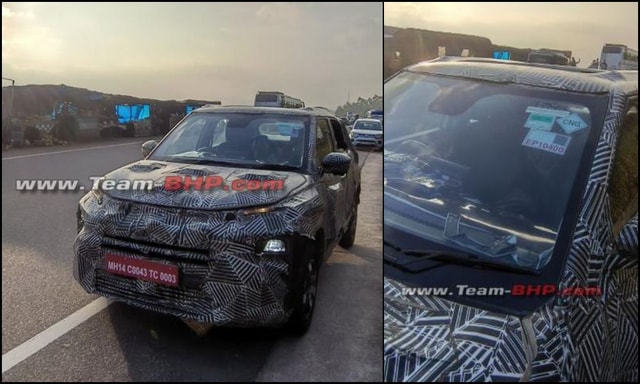 car&bike Team | Dec 10, 2025Facelifted Tata Punch CNG Spied Testing Ahead Of DebutCompared to previous spyshots of the Punch facelift, the CNG vehicle here looks to have missed out on some kit.1 min read
car&bike Team | Dec 10, 2025Facelifted Tata Punch CNG Spied Testing Ahead Of DebutCompared to previous spyshots of the Punch facelift, the CNG vehicle here looks to have missed out on some kit.1 min read Seshan Vijayraghvan | Dec 10, 2025All-New Kia Seltos Unveiled: A Detailed Look In PicturesBookings for the new Kia Seltos will commence from December 11, while the price announcement will happen on January 2, 2026.2 mins read
Seshan Vijayraghvan | Dec 10, 2025All-New Kia Seltos Unveiled: A Detailed Look In PicturesBookings for the new Kia Seltos will commence from December 11, while the price announcement will happen on January 2, 2026.2 mins read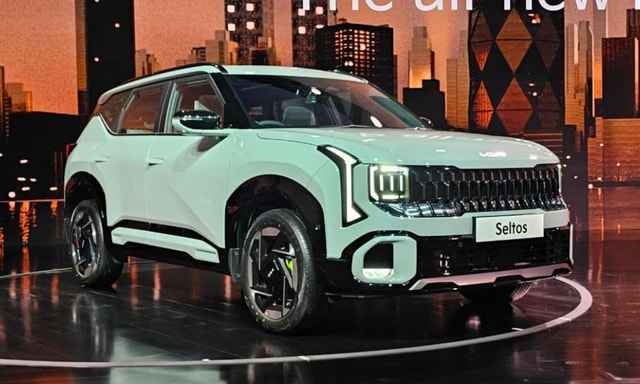 Jaiveer Mehra | Dec 10, 20252026 Kia Seltos Makes Global Debut; India Launch On January 2, 2026Second-gen Seltos debuts Kia’s latest design language with design elements borrowed from the new Telluride SUV.4 mins read
Jaiveer Mehra | Dec 10, 20252026 Kia Seltos Makes Global Debut; India Launch On January 2, 2026Second-gen Seltos debuts Kia’s latest design language with design elements borrowed from the new Telluride SUV.4 mins read car&bike Team | Dec 10, 20252026 Kia Seltos World Premiere Highlights: Specifications, Features, Images1 min read
car&bike Team | Dec 10, 20252026 Kia Seltos World Premiere Highlights: Specifications, Features, Images1 min read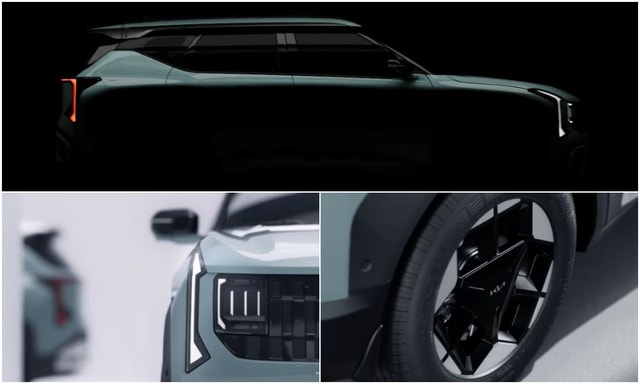 car&bike Team | Dec 10, 20252026 Kia Seltos World Premiere In India Today: What To Expect From Gen 2 SUVOne of the most popular compact SUVs on sale in India is about to undergo a complete transformation as it enters its second generation in 2026. Here's all we know about the new Kia Seltos so far.3 mins read
car&bike Team | Dec 10, 20252026 Kia Seltos World Premiere In India Today: What To Expect From Gen 2 SUVOne of the most popular compact SUVs on sale in India is about to undergo a complete transformation as it enters its second generation in 2026. Here's all we know about the new Kia Seltos so far.3 mins read
 Shams Raza Naqvi | Dec 10, 20252025 Mini Cooper Convertible Review: More Colour On Indian RoadsThe updated Mini Cooper Convertible is set to be launched in the Indian market in the next few days. We drive it around Jaisalmer for a quick review.1 min read
Shams Raza Naqvi | Dec 10, 20252025 Mini Cooper Convertible Review: More Colour On Indian RoadsThe updated Mini Cooper Convertible is set to be launched in the Indian market in the next few days. We drive it around Jaisalmer for a quick review.1 min read Bilal Firfiray | Dec 8, 2025Tata Sierra Review: India’s New Favourite?Marking its return after a few decades, the reborn Sierra has made everyone sit up and take notice. But is it worth the hype?10 mins read
Bilal Firfiray | Dec 8, 2025Tata Sierra Review: India’s New Favourite?Marking its return after a few decades, the reborn Sierra has made everyone sit up and take notice. But is it worth the hype?10 mins read Girish Karkera | Dec 4, 20252026 Honda Prelude First Drive: Domesticated Civic Type RA sporty-looking coupe built to give customers a taste of performance but not at the expense of everyday practicality.5 mins read
Girish Karkera | Dec 4, 20252026 Honda Prelude First Drive: Domesticated Civic Type RA sporty-looking coupe built to give customers a taste of performance but not at the expense of everyday practicality.5 mins read Seshan Vijayraghvan | Nov 29, 2025Mahindra XEV 9S First Drive Review: Big Electric SUV, Bigger ExpectationsThe XEV 9S lands at a time when the EV crowd is growing fast. It’s a big, born-electric, three-row SUV that starts under 20 lakh. It sits close to the XUV700 in size, but the brief is very different. Here’s what it’s like on the road.11 mins read
Seshan Vijayraghvan | Nov 29, 2025Mahindra XEV 9S First Drive Review: Big Electric SUV, Bigger ExpectationsThe XEV 9S lands at a time when the EV crowd is growing fast. It’s a big, born-electric, three-row SUV that starts under 20 lakh. It sits close to the XUV700 in size, but the brief is very different. Here’s what it’s like on the road.11 mins read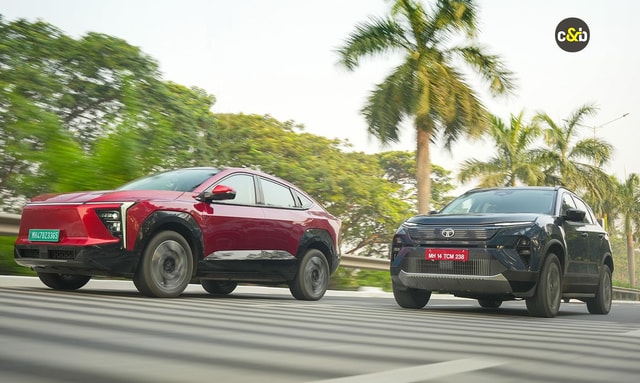 Bilal Firfiray | Nov 26, 2025Tata Harrier EV vs Mahindra XEV 9e: Battle Of India’s Electric TitansWhen India made two electric SUVs battle it out, the winner is the buyer. They get a choice to take home what’s best suited for them – and read on to find out which one is better for YOU.1 min read
Bilal Firfiray | Nov 26, 2025Tata Harrier EV vs Mahindra XEV 9e: Battle Of India’s Electric TitansWhen India made two electric SUVs battle it out, the winner is the buyer. They get a choice to take home what’s best suited for them – and read on to find out which one is better for YOU.1 min read












































































































































